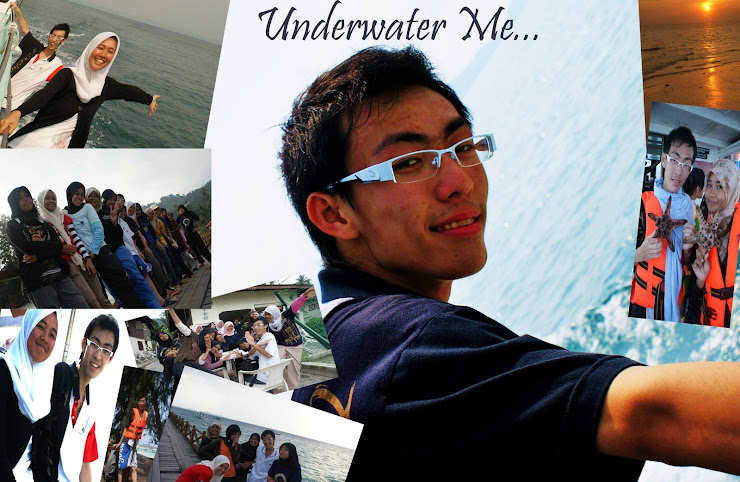 Grouping: Paranormal places
Grouping: Paranormal places
AKA: Devil's Triangle
Country: International Waters
Status: Urban Legend
The Bermuda Triangle, also known as the Devil's Triangle, is a region of the northwestern Atlantic Ocean in which a number of aircraft and surface vessels have disappeared in what are said to be circumstances that fall beyond the boundaries of human error or acts of nature. Some of these disappearances have been attributed to the paranormal, a suspension of the laws of physics, or activity by extraterrestrial beings by popular culture. Although substantial documentation exists showing numerous incidents to have been inaccurately reported or embellished by later authors, there is no doubt that many ships and airplanes have been lost in the area.
 The Triangle Area
The Triangle AreaThe boundaries of the Triangle vary with the author; some stating its shape is akin to a trapezoid covering the Straits of Florida, the Bahamas, and the entire Caribbean island area east to the Azores; others add to it the Gulf of Mexico. The more familiar, triangular boundary in most written works has as its points somewhere on the Atlantic coast of Florida; San Juan, Puerto Rico; and the mid-Atlantic island of Bermuda, with most of the accidents concentrated along the southern boundary around the Bahamas and the Florida Straits. The area is one of the most heavily-sailed shipping lanes in the world, with ships crossing through it daily for ports in the Americas, Europe, and the Caribbean Islands. Cruise ships are also plentiful, and pleasure craft regularly go back and forth between Florida and the islands. It is also a heavily flown route for commercial and private aircraft heading towards Florida, the Caribbean, and South America from points north. The Gulf Stream ocean current flows through the Triangle after leaving the Gulf of Mexico; its current of five to six knots may have played a part in a number of disappearances. Sudden storms can and do appear, and in the summer to late fall hurricanes strike the area. The combination of heavy maritime traffic and tempestuous weather makes it inevitable that vessels could founder in storms and be lost without a trace – especially before improved telecommunications, radar, and satellite technology arrived late in the 20th century. Brief History
Acording to the Triangle authors, Christopher Columbus was the first person to document something strange in the Triangle, reporting that he and his crew observed "strange dancing lights on the horizon", flames in the sky, and at another point he wrote in his log about bizarre compass bearings in the area. From his log book, dated October 11, 1492 he wrote:
The land was first seen by a sailor (Rodrigo de Triana), although the Admiral at ten o'clock that evening standing on the quarter-deck saw a light, but so small a body that he could not affirm it to be land; calling to Pero Gutiérrez, groom of the King's wardrobe, he told him he saw a light, and bid him look that way, which he did and saw it; he did the same to Rodrigo Sánchez of Segovia, whom the King and Queen had sent with the squadron as comptroller, but he was unable to see it from his situation. The Admiral again perceived it once or twice, appearing like the light of a wax candle moving up and down, which some thought an indication of land. But the Admiral held it for certain that land was near...
Modern scholars checking the original log books have surmised that the lights he saw were the cooking fires of Taino natives in their canoes or on the beach; the compass problems were the result of a false reading based on the movement of a star. The first article of any kind in which the legend of the Triangle began appeared in newspapers by E.V.W. Jones on September 16, 1950, through the Associated Press. Two years later, Fate magazine published "Sea Mystery At Our Back Door", a short article by George X. Sand in the October 1952 issue covering the loss of several planes and ships, including the loss of Flight 19, a group of five U.S. Navy TBM Avenger bombers on a training mission. Sand's article was the first to lay out the now-familiar triangular area where the losses took place. Flight 19 alone would be covered in the April 1962 issue of American Legion Magazine. The article was titled "The Lost Patrol", by Allen W. Eckert, and in his story it was claimed that the flight leader had been heard saying "We are entering white water, nothing seems right. We don't know where we are, the water is green, no white." It was also claimed that officials at the Navy board of inquiry stated that the planes "flew off to Mars." "The Lost Patrol" was the first to connect the supernatural to Flight 19, but it would take another author, Vincent Gaddis, writing in the February 1964 Argosy Magazine to take Flight 19 together with other mysterious disappearances and place it under the umbrella of a new catchy name: "The Deadly Bermuda Triangle";[6] he would build on that article with a more detailed book, Invisible Horizons, the next year. Others would follow with their own works: John Wallace Spencer (Limbo of the Lost, 1969); Charles Berlitz (The Bermuda Triangle, 1974); Richard Winer (The Devil's Triangle, 1974), and many others, all keeping to some of the same supernatural elements outlined by Eckert. Natural Explanations:
There are Acts of Man for this History explanation too, which are:
Famous Incidents:
FLIGHT 19
US Navy TBF Grumman Avenger flight, similar to Flight 19. This photo had been used by various Triangle authors to illustrate Flight 19 itself.
Flight 19 was a training flight of TBM Avenger bombers that went missing on December 5, 1945 while over the Atlantic. The impression is given that the flight encountered unusual phenomena and anomalous compass readings, and that the flight took place on a calm day under the supervision of an experienced pilot, Lt. Charles Carroll Taylor. Adding to the intrigue is that the Navy's report of the accident was ascribed to "causes or reasons unknown." It is believed that Taylor's mother wanted to save her son's reputation, so she made them write "reasons unknown" when actually Taylor was 50 km NW from where he thought he was. While the basic facts of this version of the story are essentially accurate, some important details are missing. The weather was becoming stormy by the end of the incident; only Taylor had any significant flying time, but he was not familiar with the south Florida area and had a history of getting lost in flight, having done so three times during World War II, and being forced to ditch his planes twice into the water; and naval reports and written recordings of the conversations between Taylor and the other pilots of Flight 19 do not indicate magnetic problems.
CARROLL A. DEERING

Schooner Carroll A. Deering, as seen from the Cape Lookout lightship on January 29, 1921, two days before she was found deserted in North Carolina. (US Coast Guard)A five-masted schooner built in 1919, the Carroll A. Deering was found hard aground and abandoned at Diamond Shoals, near
Cape Hatteras, North Carolina on January 31, 1921. Rumors and more at the time indicated the Deering was a victim of piracy, possibly connected with the illegal rum-running trade during Prohibition, and possibly involving another ship, S.S. Hewitt, which disappeared at roughly the same time. Just hours later, an unknown steamer sailed near the lightship along the track of the Deering, and ignored all signals from the lightship. It is speculated that the Hewitt may have been this mystery ship, and possibly involved in the Deering crew's disappearance.There are other famous incidents which are:
 Grouping: Paranormal places
Grouping: Paranormal places The Triangle Area
The Triangle Area















1 comments:
a place worth visit
haha
recommend u a short drama - the triangle
Post a Comment